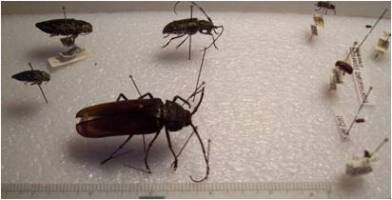Adapted from: Millar, Constance I., Nathan L. Stephenson, and Scott L. Stephens, 2008. (February 5, 2008). Reframing forest and resource management strategies for a climate change context. U.S. Department of Agriculture, Forest Service, Climate Change Resource Center. Media: millar020508.pdf
Figure 1. Thinning of overly dense pine stands can promote resilience to wildfire and, thus, to climate change, as confirmed by research in California’s Blacks Mountain Experimental Forest. After the pine stand (left) underwent mechanical thinning followed by a prescribed



